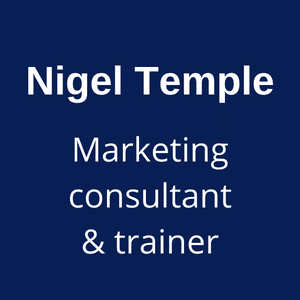What would happen if more people read your website content and returned time and time again? Dull looking pages and blogs have a detrimental effect on your enterprise. Writing engaging, helpful and useful content is only part of the jigsaw puzzle. If you can make your content look interesting and well designed, website visitors are more likely to stick around, which is what you want, isn’t it?
If you use WordPress, I suggest that you learn a little more about content blocks. They can be used to bring a page to life. However, it is true that they can be somewhat frustrating, particularly if you are busy and don’t have the time to figure everything out.
What would happen if more people read your website content and returned time and time again?
Here are some WordPress block tips
Click on the + sign in the blue (or black) rectangle. You will see a selection of content blocks. As a writer, the ones which I use the most are: Heading | Paragraph | Spacer
Think of blocks as bricks. You can move them around or remove them altogether.
When you’re working in a block, a toolbar appears. The contents of the toolbar varies, depending on the type of block that you are working in.
If the toolbar gets in the way, click on the three dots in the Upper Right Hand Corner (URHC) of the screen and select: Top toolbar
Inserting a block
Once you have created a few blocks, slowly move your cursor up and down the screen. You should see a blue box with a + sign within it. Click on this and content block options appear.
Type in the block name
If you know the name of your block, where it says: Type / to choose a block
…type a forward slash: /
…followed by the name of your block
List of different types of WordPress content blocks
Here is a list of some of the different content blocks that are available at the time of writing.
Text blocks
- Paragraph
- Heading
- List
- Quote
- Code
- Classic block
- Preformatted
- Pullquote
- Table
- Verse
Media blocks
- Image
- Gallery
- Audio
- Cover
- File
- Media and Text
- Video
If you want to have two or more images appearing side by side, you can use the Gallery block:


Design blocks
- Buttons
- Columns
- Group
- More
- Page break
- Separator
- Spacer
- Site logo
- Site tagline
- Site title
- Archive title
- Post categories
- Post tags
Widgets
- Shortcode
- Archives
- Calendar
- Categories
- Custom HTML
- Latest comments
- Latest posts
- Page list
- RSS
- Social icons
- Tag cloud
- Search
- Calculator form
Theme
- Query loop: allows you to show posts based on specified parameters
- Post title
- Post content
- Post date
- Post excerpt
- Post featured image
- Log in/out
- Posts list
Embeds include
- Embed
- YouTube
- WordPress
- Soundcloud
- Spotify
- Flickr
- Vimeo
- Animoto
- Cloudup
- Crowdsignal: surveys and polls
Classic block

I created this paragraph using the Classic block. A menu appeared, just like in the image above.
Conclusion
I know that you are busy. If you are a marketer, comms professional or business owner I am sure that your to do list never ends. In order to get better results, invest more time in learning. WordPress is a good example, in that there is so much that you can do with it. More knowledge can help you to make significant improvements.


